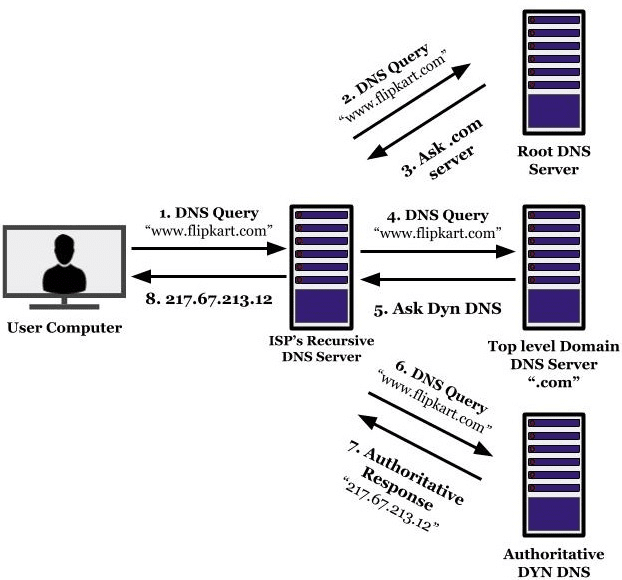What is the Domain Name System(DNS)
DNS or the Domain Name System is a service that is provided to map layer 3 IP Addresses to names that we can remember. Since computers don't speak in terms of 'names' you need to have some sort of mapping service to tell the computer, what IP a certain name is referring to. This is a lot like a phone book(if your old) or a contact list on your phone. We, as humans, are not very good at remembering numbers so we create contacts in our phones that 'maps' a persons name to their phone number. This makes it easier for us to be able to communicate with a lot more people. This DNS service is usually ran on a server and there are DNS servers on your LAN as well as ones that service the Internet. These DNS servers handle the DNS queries that machines send when they need to figure out what a particular name maps to.
There are multiple types of queries - recursive, iterative, and non-recursive. Before we talk about the queries we must talk about the DNS resolver. The DNS resolver, which is one of the types of DNS servers, is responsible for checking if the hostname is already in its local cache. If the resolver doesn't have an entry for that hostname then it will recursively query DNS servers, starting at the root, until it receives a response from an authoritative server. The first type of query is the Recursive Query. This happens when a DNS resolver or server must do a recursive lookup starting at the root of the tree(.) and going down the tree until an authoritative server responds. The next type of query is the Iterative Query. This query is different from the recursive query in that the client actually communicates directly with each DNS server involved in the lookup. In this case the DNS resolver will respond if it has the record in its cache but if it does not it responds with the root server or authoritative servers address. The last type of query is the Non-Recursive Query. This query happens when the DNS resolver already knows the answer and can immediately respond with either the DNS record or responds with the authoritative server for that zone. The image below is illustrates how a machine sends a DNS request and a DNS resolver recursively looks for the requested domain name.
There are three types of DNS servers - DNS resolvers, authoritative DNS root servers, and non authoritative servers. The image below shows the root server, which is the top of the DNS 'tree', and doesn't actually respond to queries other than give the addresses for the top level domain servers based on the extension of the domain(.com, .net, .edu). The top level domain(TLD) servers also don't respond to specific queries except for with other server that are authoritative for the zone. There are a total of 13 root name servers around the world and these are known to every recursive resolver. The Top Level Domains(TLD's) are pictured in yellow below. The TLD's are one level below the root level.
- A record: This type of record maps a hostname to an IPv4 address
- CNAME: This is known as the cononical name and is really just an alias for another name
- AAAA record: This type of record maps a hostname to an IPv6 address
- MX record: The Mail Exchanger record specifies a host that is responsible for responding to email for a specific domain.




Comments
Post a Comment